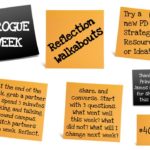Over the next few weeks, many school administrators will ensure that they complete a to do list of required observations for teachers.
The mandated observations are a part of the overall evaluation process, and along with other information, such as student growth objectives and student performance on standardized tests, as well as a required score on professional responsibilities, will give teachers an overall evaluation score for the year.
When this system was first put in place several years ago, it was intended to replace a system that in many cases was a meaningless checklist approach to determining whether a teacher was effective or not effective.
As administrators everywhere scramble to complete the observations, the system meant to replace checklists became another mandated checklist to complete.
I have found that the system in practice limits the amount of feedback that teachers receive in order to improve. So I try to do something different. Yes, I complete all of the required observations, but I try to help teachers grow outside of the observation process.
And it’s all about feedback.
Whenever I visit a classroom, I try to provide a teacher with critical feedback. A few years ago, when I first became a Principal, I would try to remember something I noticed in a classroom to share with a teacher later in the day. I might jot a note down, or record a note on my phone. What I discovered was that usually after a dozen fires later, the feedback I had intended to share with a teacher was either forgotten or never shared.
So I decided to come up with a system that was more efficient and effective for me, and hopefully provided teachers with meaningful feedback. I set up a Google Form for each individual teacher to provide feedback. I used an Email Notification Add-On to be sure that the feedback was emailed directly to each teacher. Finally, I linked each form to a QR Code, and posted it outside of each teacher’s classroom.
My system was simple, as soon as I left a classroom, I would scan the code, type in some feedback and then click submit. Instantly, the feedback would arrive in the teacher’s inbox. Sometimes, I provide a suggestion. Sometimes I ask a question in order to start a discussion. My hope is that the feedback is more meaningful when provided in a more timely manner and each time I visit a classroom. My hope is that the feedback I’m providing serves to help teachers improve more so than the observation system that we have in place.
Rich (@RACzyz)




